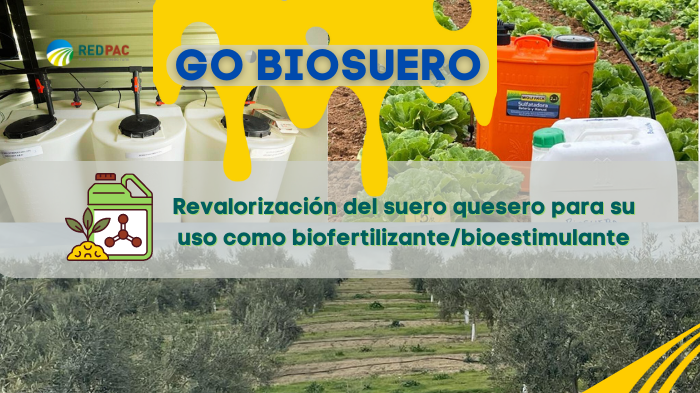
31 de July de 2023
Innovación
The project aims to contribute to soil improvement through biofertilization and biostimulation with dairy soil derivatives and to the generation of a circular economy process by valorizing these wheys.
- The project will allow small cheese producers to eliminate their waste and farmers to obtain biological products to fertilize and combat pests.
- The effectiveness of cheese whey as biofertilizers or biostimulants could facilitate a circular economy process.
There are innovative projects that manage to find alternative uses for inputs, surpluses, or waste, and even others that allow for eco-friendly uses for products that weren't originally intended to be. However, the real challenge lies in the circular economy : ensuring that the entire life cycle of a material is useful, reusable, and even generates added value.
One of these challenges is the treatment of excess whey from cheese production. This type of liquid doesn't always have a clear alternative use, but the Biosuero Operational Group ( GO Biosuero ) was established in late 2022 to revalue this waste with promising chemical compounds for agricultural applications.
Project coordinator Margarita Jiménez Gómez, of the Guadalhorce Valley Rural Development Group (Málaga) tells the PAC Network that the problem arises with small cheese factories, which cannot afford to treat or transport whey waste as easily as larger companies.
Circular economy in the Guadalhorce Valley (Málaga)
The situation of the area's small cheese factories, which struggled with waste management, combined with farmers and consumers' growing interest in organic production, created a fertile ground for the idea to emerge.
The GO Biosuero has the following objectives:
- Contribute to soil improvement through biofertilization/biostimulation with whey derivatives.
- Generation of a circular economy process to valorize whey by transforming it into biofertilizers and/or biostimulants to improve crops and soils.
If the expected results are achieved, according to Jiménez Gómez, the project's applicability to crops and cheese factories in different areas will be entirely possible, as this is unexplored but very promising territory.
“This is at the pinnacle of innovation ,” he says, “if we see that the serum effectively helps with pest control and fertilization, it could have significant development potential.”
Jiménez adds that in countries like Spain and France, "there is a significant amount of small-scale cheesemaking. In Andalusia , we are pioneers in organic production," and the two factors of small-scale cheesemaking and agricultural inputs interested in organic products pave the way for putting the results of this operational group into practice.
Project phase
The GO Biosuero is in an initial stage, but with results in hand, as it has already moved from the laboratory to current field trials . Fermented biosuero produced by the University of Seville , which has the prototype of the tool that will be used for the prefermentation of cheese whey, has been applied. Thus, the whey is currently being applied to olive groves, almond trees, citrus trees, woody crops, lettuce , and onions , and will soon be tested on squash and tomatoes. Jiménez Gómez estimates that the project is approximately 30% complete, with a two-year duration (until the end of 2024/early 2025).
Members and funding
The GO Biosuero is coordinated by the aforementioned GDR Valle del Guadalhorce , and is made up of the International Agro-Food Campus of Excellence ceiA3 , Seneca Green Catalyst , the University of Seville and the Guadalhorce Ecological Cooperative .
The final budget is 281,639.80 euros, subsidized by 10% by the Andalusian Regional Government and 90% by the European Union through the European Agricultural Fund for Rural Development ( EAFRD ).









